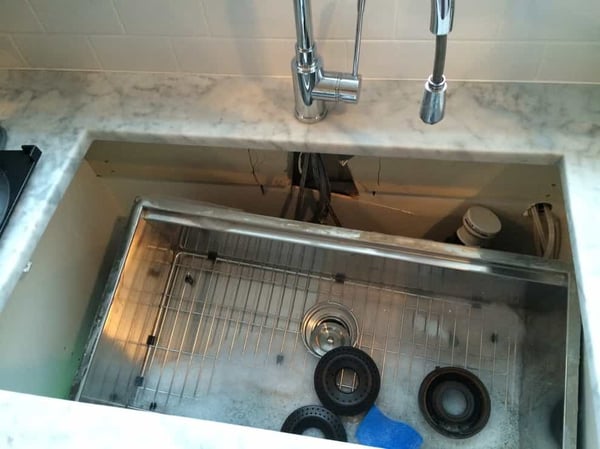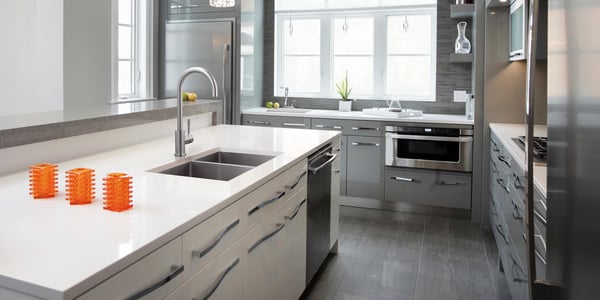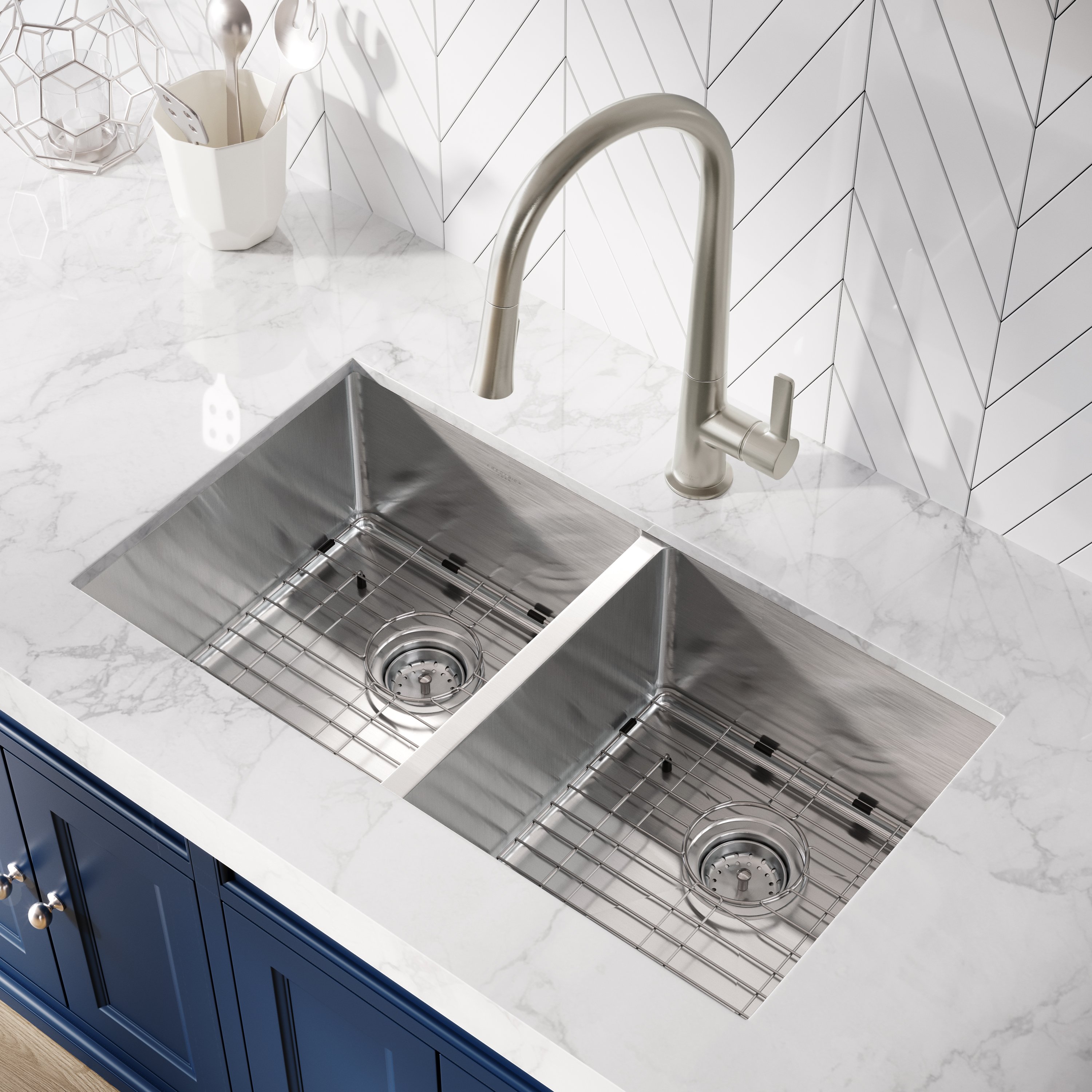Whether you’re looking for a sink for your kitchen, bathroom, or even your wet bar, there are different styles, materials, and designs of sinks to consider before making a choice. First, you'll want to choose an installation type. The most popular installation methods are drop-in and undermount. In this blog, we'll review everything you need to know about undermount sinks.
What is an Undermount Sink?
As opposed to drop-in sinks that are the most familiar type of kitchen sink, an undermount sink is installed from below the counter. While undermount sinks do have a rim, the rim attaches to the bottom of the counter, so it isn’t visible.
What holds an undermount kitchen sink or undermount bathroom sink in place is high-strength epoxies, anchors and clips, and silicone caulk, according to Ask the Builder. When it comes to cost for this style of sink, an undermount sink will usually cost between $250 and $800, depending on the size of the sink and the material.

How is an Undermount Sink Installed?
The most distinctive feature of an undermount sink is that it sits below the countertop in your kitchen or bathroom. Because the edge lip of the sink is mounted below the counter, undermount sinks hang underneath the countertop. Unlike sinks that sit on top of a countertop, this style creates a continuous flow from the countertop into the sink.
How to Install an Undermount Sink
Properly installing and sealing an undermount sink is crucial for this style of bathroom or kitchen sink in order to make sure it’s properly supported and to prevent leakage. Your counter and supports need to be able to keep the sink in its place and hold its weight safely. This YouTube video from Moen will help walk you through the installation process.
As with most DIY projects around the home, it can be easier to hire a professional. Most professionals will be able to install an undermount sink in 30 minutes or less.

Franke is available at Kitchen & Bath Classics
Pros of an Undermount Sink
One of the greatest advantages of an undermount sink in your kitchen or bathroom is that it makes cleaning an easy task for your countertops. Usually, the ease of cleaning is the biggest selling point with this style of sink. Cleaning a countertop is simple because there is no lip acting as an obstruction. You can wipe crumbs and mess straight into the sink and down the drain. Drop-in sinks have higher rims, which don’t allow for the same simple cleaning.
Another benefit of undermount sinks is that they give you more countertop space. Undermount sinks allow the countertop in your kitchen or bathroom to extend all the way to the sink. That means if you have a tiny bathroom or smaller kitchen, an undermount sink can give you a little more countertop space.
Finally, according to The Spruce, undermount sinks will return a better resale value for your home than drop-in sinks.
Cons of an Undermount Sink
Compared to drop-in kitchen and bathroom sinks, undermount sinks are not easy to install. It’s simple and painless for homeowners to install their own drop-in sink if there’s already a cut-out in place in the counter fitting the sink dimensions.
Drop-in sinks are also less costly. Undermount sinks will be more expensive both for the materials and the labour involved in an installation.
Lastly, drop-in countertops are the winner when comparing the better choice of countertop materials. You can attach an undermount sink to all countertop materials except for laminate. Unlike undermount sinks, drop-in sinks can be installed on any and all countertop types and materials.
Preparing for a kitchen or bathroom remodel? Visit your local Kitchen & Bath Classics showroom to work with our team of expert consultants and make your dream home a reality.
Featured Image: Trent Single Bowl Undermount Stainless Steel Sink from Frederick York



